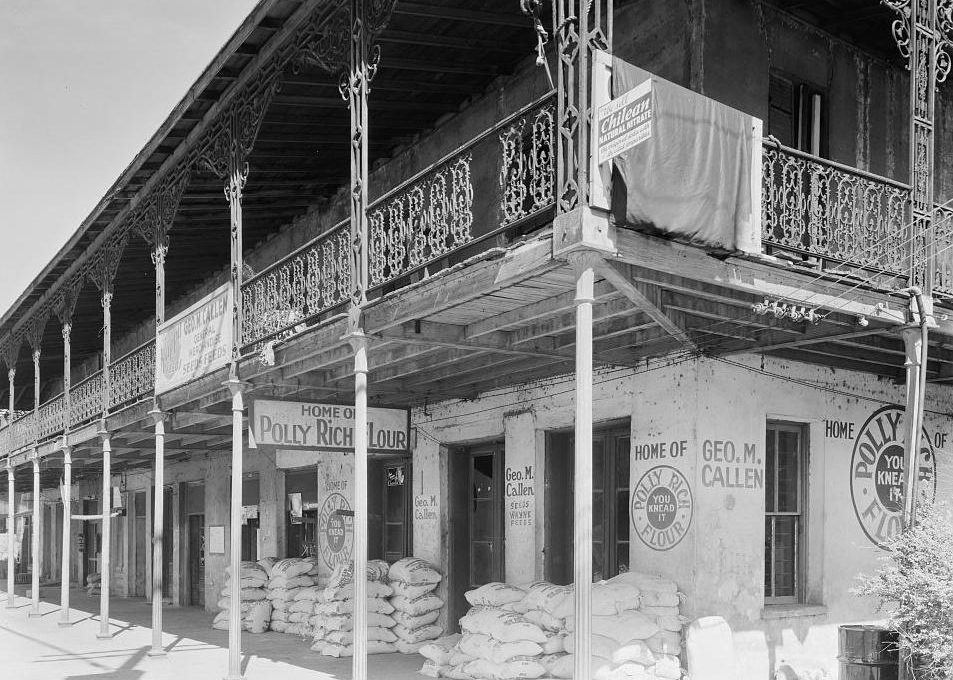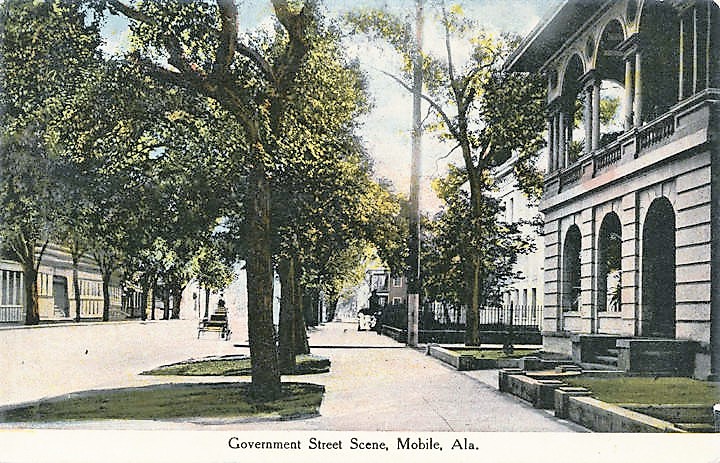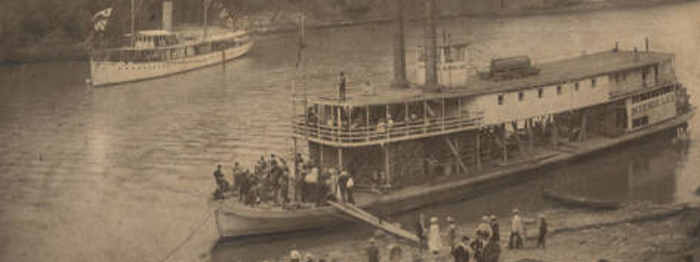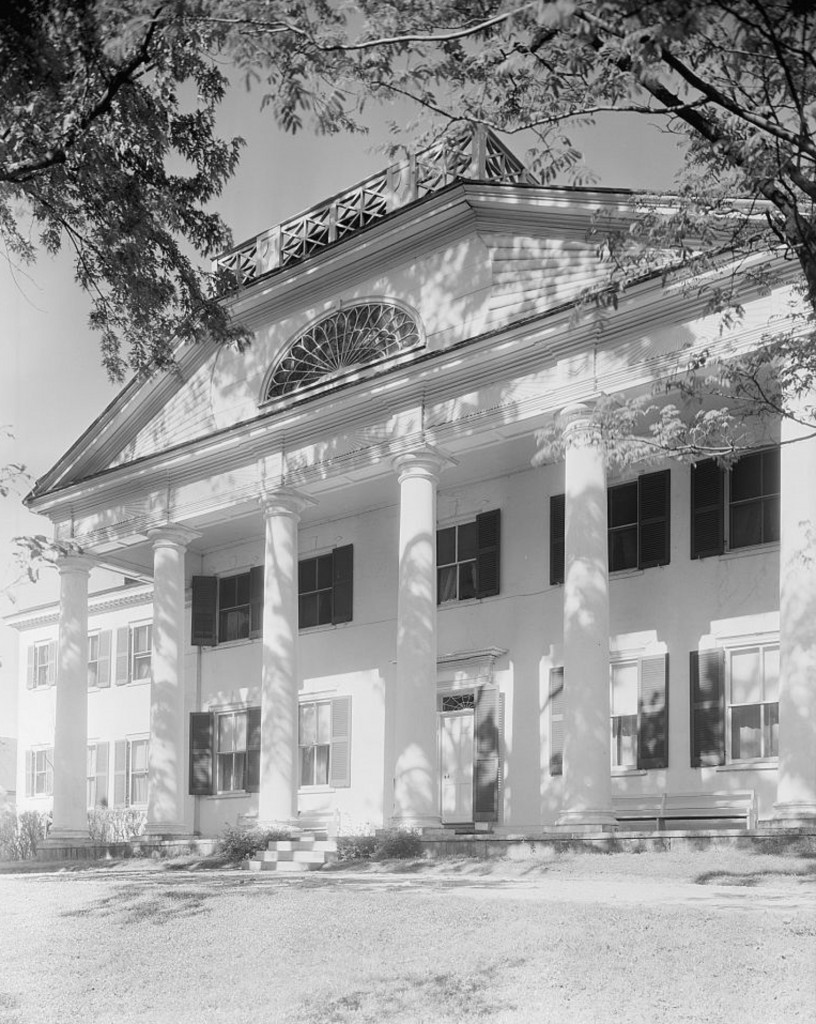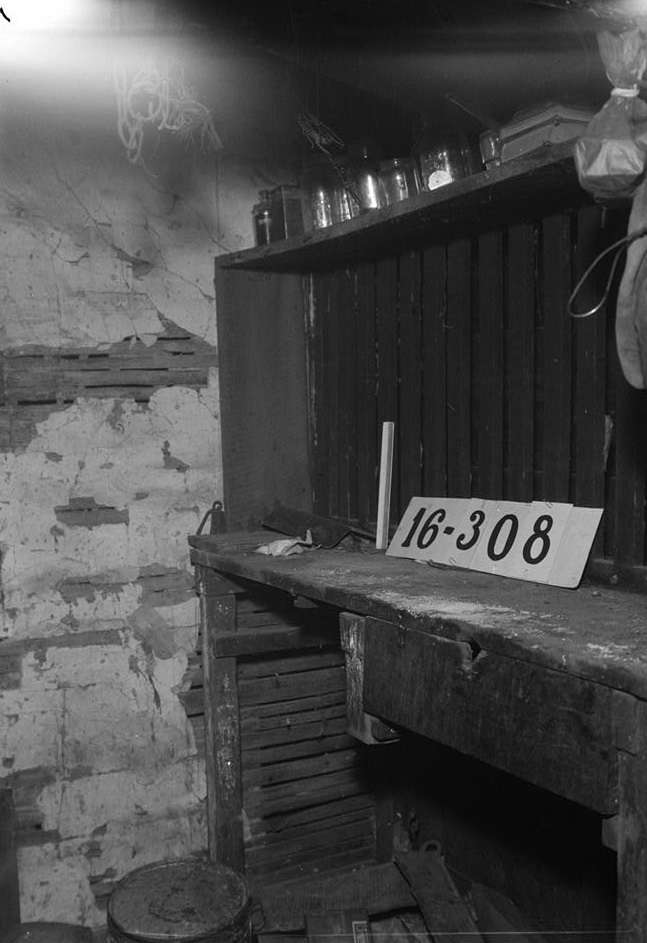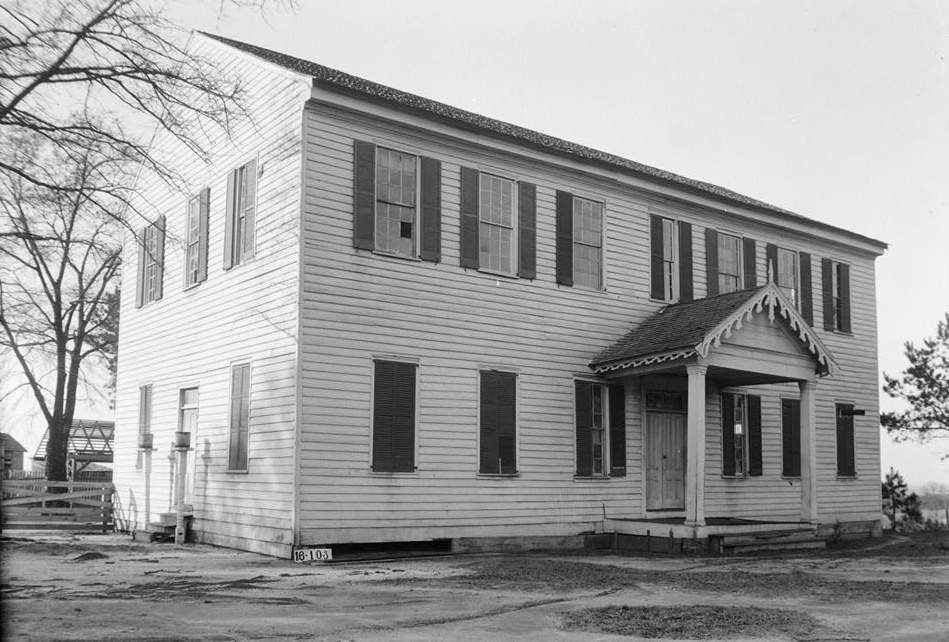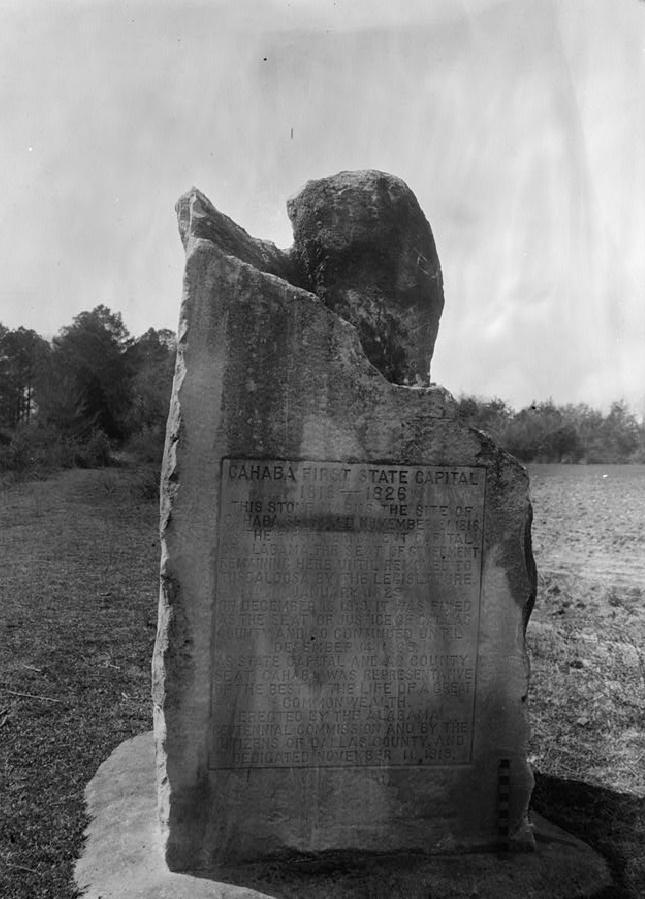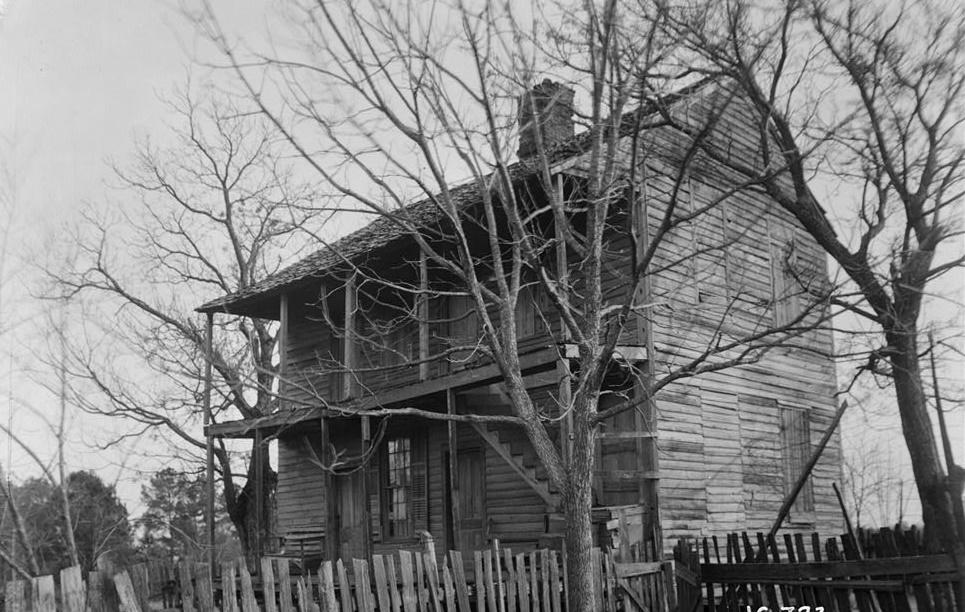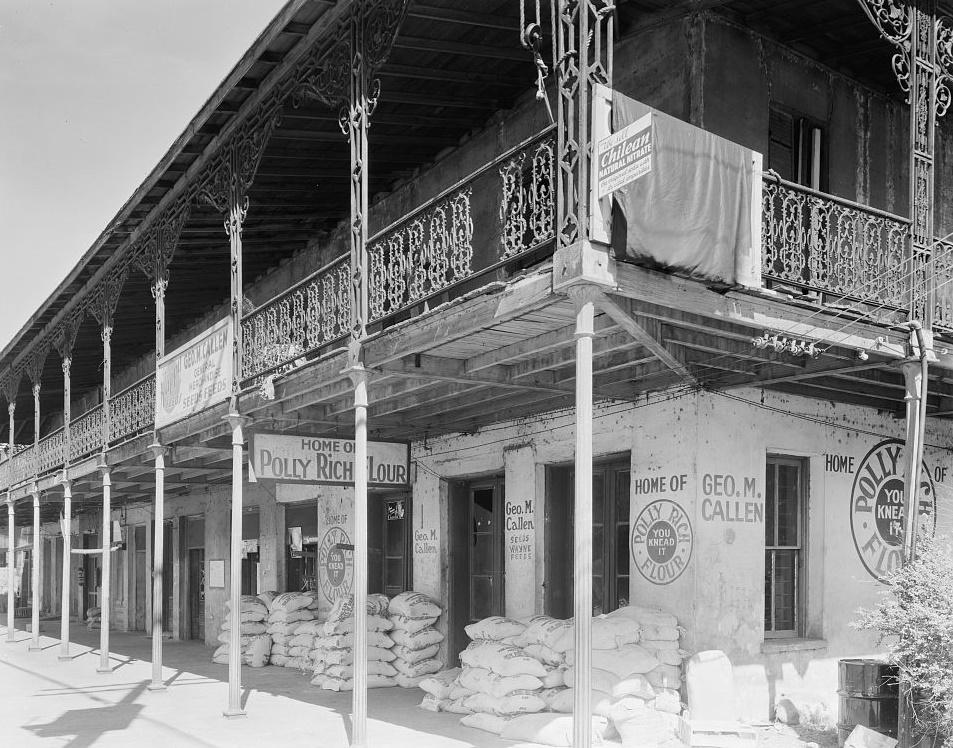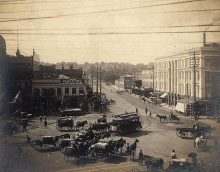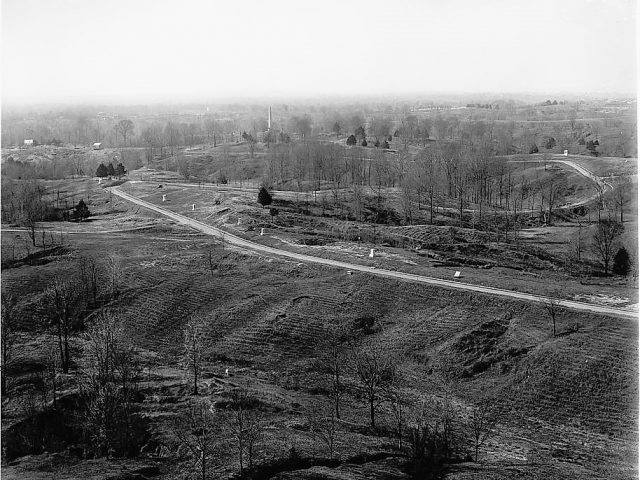Some Early Towns In Alabama
This story is an excerpt from the book ALABAMA FOOTPRINTS Exploration: Lost & Forgotten Stories (Volume 1) available at Amazon.com
Mobile, Mobile County, Alabama
Though, not a part of the United States until 1813, Mobile began as the first capital of colonial French Louisiana in 1702. During its first 100 years, Mobile was a colony of France, then Britain, and lastly Spain. Mobile first became a part of the United States of America in 1813, with the annexation of West Florida under President James Madison.
Government Street, Mobile, Alabama ca. 1900 (Library of Congress)
The European settlement of Mobile, then known as Streets Paved with Brick and Stone at St. Stephens, started in 1702, at Twenty-seven Mile Bluff on the Mobile River.
As previously stated, Mobile was founded by French Canadian brothers Pierre Le Moyne d’Iberville and Jean-Baptiste Le Moyne, Sieur de Bienville, to establish control over France’s Louisiana claims.
By the time Mobile was included in the Mississippi Territory in 1813, the population had dwindled to roughly 300 people. The city was included in the Alabama Territory in 1817, after Mississippi gained statehood. Alabama was granted statehood in 1819; Mobile’s population had increased to 809 by that time.
Mobile is the county seat of Mobile County, Alabama and as of the 2010 census, the population is 195,111.
Old St. Stephens, Washington County, Alabama
Americans who took possession of St. Stephens upon the evacuation of Fort Saint Stephens by the Spaniards in 1799. In 1807 lots were laid off near and around the old fort, and a town commenced, which grew rapidly after the close of the war of 1812-15. Many wealthy people bought lots and erected residences; others settled around in the country. Large sums of money were invested; and in trades, professions and industries of all kinds it soon became the peer of any new city of the time.
Old St. Stephens boat dock (Library of Congress)
When the first state assembly adjourned at St. Stephens on February 14, 1818, many Alabama residents thought the capital should be moved to a more central location. Tuscaloosa was under consideration when Governor William Wyatt Bibb made the announcement in 1819 that the capital would be moved to Cahaba. This spelled certain doom for St. Stephens. In addition, the development of shallow draft boats permitted travelers to pass over the shoals and venture further upriver past the town. Lastly, yellow fever outbreaks decimated the citizenry.
By 1833 the old town site was reduced in population to a small village; by the time of the Civil War, it had largely been replaced by the new town.
The Old St. Stephens site lies directly on the river and is no longer inhabited. New St. Stephens developed two miles inland around a railway station, but adjacent to the old site. It is the location of the post office, Baptist and Methodist churches, and residences. There were 495 people residing in New St. Stephens according to the 2010 census.
Huntsville, Madison County, Alabama
In 1811, Huntsville became the first incorporated town in the part of the Mississippi Territory that would soon be in the state of Alabama.
However, the recognized birth year of the city is 1805, the year of John Hunt’s arrival. The city’s sesquicentennial anniversary was held in 1955, and the bicentennial was celebrated in 2005.
Revolutionary War veteran John Hunt arrived and settled on the land around the Big Spring in 1805. The 1805 Treaty with the Chickasaws and the Cherokee Treaty of Washington of 1806 ceded native claims to the United States Government and the area was subsequently purchased by LeRoy Pope, who named the area Twickenham after the home village of his distant kinsman Alexander Pope. Due to anti-British sentiment around this time, the name of the new town was changed to Huntsville in honor of the first settler, John Hunt.
LeRoy Pope House ca. 1939
Huntsville is the county seat of Madison County and its population in the 2010 census was 180,105.
Mooresville, Limestone County, Alabama
Even though it encompasses only sixty-four acres, Mooresville claims to be the oldest incorporated town in the new Alabama Territory. It was incorporated on November 16, 1818 and has a connection with two Presidents of the United States. The town has the oldest, still operational post office in the state of Alabama.
Mooresville is the site of Old House, in which President Andrew Johnson, the 17th President of the United States, was a tailor for a short time. President James A. Garfield preached in Mooresville in the old white clapboard Church of Christ in 1862, while he was encamped nearby during the Civil War.
Located twenty miles southwest of Huntsville in Limestone County, Mooresville is the first incorporated town in the Alabama Territory. Some of the present day trees in Mooresville may date back to the 1800s.
Mooresville Post Office 1934 (Library of Congress)
Prior to the settlers, the Chickasaws resided in the area of Mooresville. In 1818, Mooresville had sixty-two residents and petitioned the Territorial Legislature for an Act of Incorporation, a year earlier than when Alabama became a state.
Today, the entire town, characterized as a picturesque early 19th century village, is listed on the National Register of Historic Places. The town was the primary filming location for Disney’s Tom and Huck.
The population of the town was fifty-nine according to the 2000 census.
Claiborne, Monroe County, Alabama
Claiborne is a ghost town on a bluff high above the Alabama River in Monroe County, Alabama, but in the early 1800s, it was a busy place. Following the Revolutionary War, Claiborne became one of the largest and fastest growing communities in what would become Alabama. Early settlers included three future Alabama governors: John Gayle, John Murphy, and Arthur P. Bagby. William B. Travis, a hero of the Alamo, lived in Claiborne for many years before leaving for Texas in 1831.
Other prominent politicians included James Dellet and Charles Tait. James Dellet’s house is the only original residence remaining in Claiborne.
Claiborne Masonic Lodge ca. 1934 (Library of Congress)
Marquis de Lafayette visited Claiborne in April 1825 during his famous tour of all twenty-four American States. He was entertained in the newly built masonic hall, a building which, along with the William B. Travis house, still exists but was later moved to the nearby community of Perdue Hill.
Outbreaks of yellow fever and cholera stemmed growth and after the Civil War, the town quickly lost importance in the new economy. By 2008 the site contained only the James Dellet House and three 19th century cemeteries.
Fort Claiborne is situated at the head of schooner navigation on the Alabama River, about 130 miles from Blakely by water, and one hundred and eighty by land.
Blakely, Baldwin County, Alabama
During the height of its existence, Blakeley was a thriving town which flourished as a competitor to its western neighbor, Mobile. The town is now in an Alabama historic state park known as Historic Blakeley State Park near Spanish Fort.
Native Americans lived in the area prior to European settlers arriving. Blakeley was founded by Josiah Blakeley “an entrepreneur and adventurer from Connecticut who moved to Mobile in 1806.” He bought 7,000 acres of land in the northeastern portion of Mobile Bay at the old seat of the Apalaches, where the Bayor Salome empties into the Tensaw.
Blakeley lived on the Polecat Bay side of his island, above Coffee Bayou, just across the river from Mobile. When he bought from Joseph Collins, the surveyor in 1807, there was already an unfinished dwelling on it, with a well-ditched plantation growing rice, corn, cotton, domestic grasses, and vegetables.
Joseph Collins appears to have been its first owner, having acquired it by permit of Osorno April 26, 1803. No Spanish survey seems to have been made, and so later its acreages was found to be 2280, instead of the estimated 4000. He sold it in 1807 to Josiah Blakeley, of Connecticut, for $1500. In the deed, Collins describes it as seven miles long. This Yankee made it a plantation, which he called Festino.
The oath of allegiance of Josiah Blakeley to the Spanish Crown exists in the archives at Mobile, bearing the date July 10, 1810, The paper recites that he had already lived four years in the district, and had since 1807 cultivated an island purchased from Don Jose Collins. On January 6, 1814, the Mississippi Territorial Legislature authorized him to lay out a town to be known as Blakeley. Josiah Blakeley died in 1815 and did not live to see the admission of Alabama to Statehood in 1819.
Old Cahawba, Dallas County, Alabama
Cahaba (also spelled Cahawba) was the first State Capital of Alabama.
Old Cahaba State Marker ca. 1934 (Library of Congress)
By an act of the legislature, passed February 13, 1818, Clement C. Clay, Samuel Taylor, Samuel Dale, James Titus, and William. L. Adams were appointed commissioners to select the most central and eligible location for the seat of government of the newly established Alabama Territory.
The commissioners, after investigation, reported a site at the mouth of the Cahaba River, in the recently formed county of Dallas, as the most suitable location. Their report was concurred in, and an act was passed November 21, 1818, fixing this locality the permanent capital.
The governor was named as commissioner to lay off the town into lots, and to sell them at public sale. By an act of December 13, 1819, Cahaba was fixed on as the seat of justice of Dallas County. The place was, therefore, at the same time the capital of the State and the seat of justice of Dallas County. It became at once a thriving business and an attractive social center.
The original choice of Cahaba had not long been made before it became apparent that the place had many disadvantages as a town site. Its situation was low, subjecting it to over-flow from both rivers, so that at times it was almost impossible to reach the statehouse without a conveyance by water.
In 1825 came the largest flood on record in the history of the state. The almost complete inundation of the town hastened the decision of the legislature to choose a new location. Tuscaloosa was selected, and the public offices, property and records were removed.
ALABAMA FOOTPRINTS Exploration: A Collection of Lost & Forgotten Stories
In consequence of the flood and the removal of the capitol, many influential citizens left the town, and for a time it dwindled into an insignificant village. But in a few years it began to revive, and by the early thirties it was again a populous town, and the most important shipping point on the Alabama River.
Large warehouses and stores were built, old residences repaired, new ones of excellent architectural design erected, and with the coming of many wealthy families, and an unusual number of men eminent in statesmanship, law and medical science, these combined, gave Cahaba an air of prosperity to which no other Alabama town could at that early period furnish a parallel.
Many prominent men in Alabama and national history resided in Cahaba. Of these may be mentioned Horatio G. Perry, George W. Gayle, Jesse Beene, George R. Evans, Lawrence E. Dawson, William L. Yancey, Col. C. C. Pegues, John S. Hunter, P. J. Wood, Gen. John T. Morgan, Judge B. F. Saffold, Daniel S. Troy, Gen. E. W. Pettus, Col. H. R. Dawson, Dr. E. G. Ulmer, Dr. Thomas Casey, Dr. Jabez Heutis, Joel E. Matthews, Charles Matthews, both millionaire planters, Robert S. Hatcher, Edward M. Perrine and Samuel M. Hill, both merchant princes. Cahaba was in the zenith of its prosperity at the outbreak of the War in 1861.
Colonel Rees D. Gayle house ca. 1934 (Library of Congress)
In the early part of March, 1865, the place was visited by another disastrous flood. After the waters had subsided, the Federal prisoners were all paroled and sent to Vicksburg, and the post at Cahaba was abandoned.
The flood, followed soon after by the close of the War, and by the freedom of the slaves, involving the utter demoralization of labor, brought about the rapid decline of Cahaba. The end came in 1866 when the court house was removed to Selma, under an act of December 14, 1865. Many of the citizens of Cahaba removed also. Others moved to distant localities, and a few years later Cahaba, once one of the most noted towns of central Alabama, was left empty and desolate.
Selma, Dallas County, Alabama
Selma is one of the oldest surviving cities in Alabama. Located on a high bluff of the north bank of the Alabama River in Dallas County, Selma is near the geographical center of the State.
St. James Hotel, Selma, Alabama 1939
Thomas Moore was the first white settler in the vicinity of what would later become Selma. In 1816, Thomas Moore settled in what was originally known as High Soap Stone Bluff. After Thomas Moore built his log cabin, the area was renamed Moore’s Bluff. In 1817, John Simpson built a log house where James J. Bryan’s store later located followed by a log house built by Elias Parkman. A large log house was built at the corner of where Greene and Water street by Mike Woodall for an eating house, or hotel. It was in this house that General LaFayette was entertained in 1825.
Colonel William Rufus King, who later became Vice-President of the United States, located three miles south of Selma around 1818, and took an active part in establishing the town of Selma.
Colonel King was a young diplomat, first in Naples and later to St. Petersburg, Russia, prior to his move to Alabama. After completing his Russian tenure, he followed his older brother brother, Thomas DeVane King to Alabama. His brother settled in Tuscaloosa, Alabama, while Colonel W. R. King settled on a large bend on the Alabama River in Dallas County. There he built his home, Chestnut Hill.
On the 16th and 18th of March, 1819, before Alabama was admitted as a State into the Union, William Rufus King and George Phillips bought from the United States all of section 36, township 17, range 10, and section 31, township 17, range 11, lying north of the river, which equaled about 1,101 acres.
A company was organized for the purpose of laying these lands off into a town.
Colonel William Rufus King, upon perfecting the organization of the company, was given the privilege of naming the town. Being of a literary turn of mind, and fond of the writings of ancient poets, he named the new town Selma. The name comes from Ossian’s epic poems Songs of Selma. Ossian, a blind poet, was the narrator and purported author of a cycle of epic poems published by the Scottish poet James Macpherson around 1760.
The city of Selma in Dallas County, Alabama is now known world-wide due to its prominence in the Civil Rights struggles and march from the Edmund Pettus bridge to Montgomery, Alabama.
ALABAMA FOOTPRINTS Exploration: A Collection of Lost & Forgotten Stories


